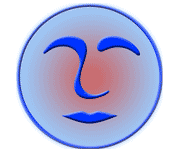
|
|
|
|
|
|
|
|
|
|
|
|
|
|
|
|
|
|
|
|
|
|
|
|
|
|

|
This interpretation of the birth chart is very comprehensive and in-depth. The Indra Report describes your basic motivations, perceptions, inclinations, and character from a number of different perspectives, giving a highly accurate composite view of your life. More... Follow @artcharts |
|
|
When one Planet contacts another by an exact geometric angle, astrologers say the planets are in aspect or forming an aspect. The MAJOR aspects are: conjunction (0 degrees), sextile (60 degrees), square (90 degrees), trine (120 degrees), or opposition (180 degrees). If you consider a 360 degree circle, a conjunction is when 2 (or more) Planets are 0 degrees apart, or conjunct. A sextile is a 60 degree angle, a square is a 90 degree angle, a trine is a 120 degree angle, and an opposition is a 180 degree angle. These major aspects were first noted by Ptolemy. Astrologers usually allow an orb of several degrees for an Aspect. A 3 degree orb is used when casting the charts used for this site. There are also *minor* aspects that are important; ie, the semisquare (45 degree), the sesquiquadrate (135 degrees), the inconjunct (150 degrees).
What we casually refer to as "astrology" is Geocentric astrology, calculated from the perspesctive of the Earth and means the planets appear to aspect each other from the Earth's perspective. Heliocentric astrology is from the perspective of the Sun.
What is a Transit?
Transits are the positions of the Planets as they orbit in their daily motion. When transiting planets contact each other or one or your natal planets, we are alerted that things are more likely to happen. You can use a biwheel chart to compare the current transits to a natal chart.
Which Transits are most important?
The slowest moving outer Planets ironically have the most influence. Even tho they are farthest away from the Earth, their slow motion lengthens the time that their aspects last, thereby creating the greatest change. The Moon aspects are the most fleeting. They are used to time events, but mostly, they indicate passing moods. Transits of the outer planets to your personal Planets can signal big changes in your life.
How do aspects work in your chart? Find out with these insightful personalized astrology reports:
Merlin Report
Indra Report
Astro*Talk Report
The Sky Within
Heaven Knows What
Life Path Report
Woman-to-Woman Report
Find your current Transits and Progressions
artcharts BLOG POST: Transits and Progressions: vive le difference
continue to the next lesson
Top of page.
Copyright 1996-2019 Artcharts
Home | Privacy Policy | About Us | Contact Us